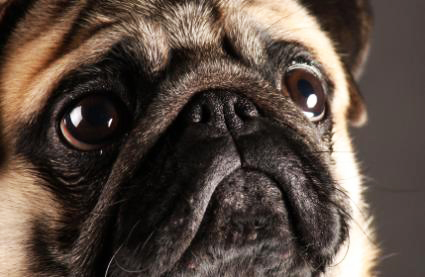Brachycephalic Syndrome
May 26th 2017
Cats

Brachycephalic syndrome is seen in animals with a shortened and flattened muzzle and it is quite common in both dogs and cats! In fact, over the years, people have bred for this trait, as can be seen in Bulldogs, Pugs, Boston terriers, Shih Tzu and Pekingese dogs, and Persian, Himalayan, and Burmese cats.
While this conformation gives a very distinct look to our animals, it also often comes with other physical changes – nostrils that are too small (stenosis of the nostrils), a soft palate that is too long, and a reduction of the diameter of the trachea (“wind pipe”). This combination of anomalies increases resistance in the air passages of the upper respiratory tract. To get a feeling of what this does, very lightly pinch your nostrils and try to inhale deeply; you will feel pressure build up in your throat – specifically, at the level of the larynx, which is the entrance to your trachea. Due to this constant negative pressure, brachycephalic breeds are at greater risk of developing more serious conditions, such as eversion of the laryngeal saccules (causing a portion of the mucosa to partially obstruct air flow into the trachea) or even tracheal collapse.
These dogs and cats often snore and have difficulty breathing. They are also intolerant to exercise, particularly in hot conditions, because they are not able to properly regulate their body temperatures through breathing.
While this is a congenital syndrome, there are surgical treatment options to help your snub-nosed pet live a more comfortable life! This treatment includes a rhinoplasty (to enlarge the outer portion of the nostrils) and a palatoplasty (to remove excess tissue from the soft palate).
The prognosis is generally good, however it is important that these surgeries be done at a young age – in fact, they can be done at the same time as your pet is spayed or neutered, which is what we recommend. Your animal will then be able to breathe easier, tolerate summer temperatures and lead a more active life without pulmonary or cardiac complications!
Don’t hesitate to contact your veterinarian for any questions.
